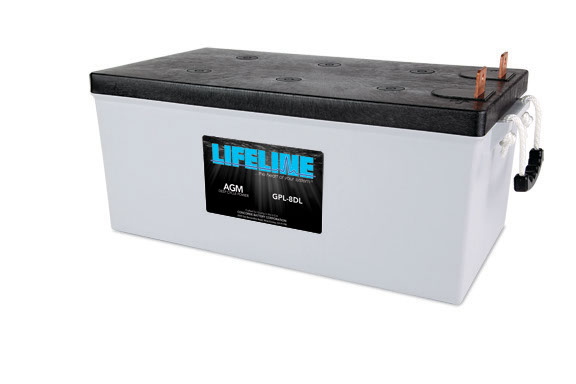 AGM Marine Batteries are designed to resist the toughest environments from around the globe. When compared to gel batteries, AGM (Absorbed Glass Mat) batteries are better suited for colder climates and sudden bursts of power. In addition, they can last for years when care is taken and they are properly maintained. Most importantly, they can be recharged quickly; however, they must be discharged to ensure the maximum life of the battery is obtained. Seems easy enough but, we’ll look at why exactly this is such a necessity in this blog.
AGM Marine Batteries are designed to resist the toughest environments from around the globe. When compared to gel batteries, AGM (Absorbed Glass Mat) batteries are better suited for colder climates and sudden bursts of power. In addition, they can last for years when care is taken and they are properly maintained. Most importantly, they can be recharged quickly; however, they must be discharged to ensure the maximum life of the battery is obtained. Seems easy enough but, we’ll look at why exactly this is such a necessity in this blog.
Use of AGM Batteries and AGM Battery Chargers
Let’s take a look at the history of the AGM battery. AGM batteries were first developed in the 1980’s to meet the demand for light weight, leak-proof batteries that could be mounted virtually anywhere. These batteries can be used in multiple applications and tend to be favored where safety is of upmost importance. For example, medical equipment and areas with limited real estate, where a tightly and completely sealed battery is ideal, such as boats.
The quick charging rate of AGM batteries certainly is attractive to many boaters. However, battery recharging can be tedious, and some charging methodologies prove much slower than others. A battery may need to be hooked up for use prior to reaching a fully charged state. After all, properly functioning electronics are not only convenient, but also a necessity when it comes to critical equipment systems, i.e. navigation.
Let’s say a battery is used to a typical cycle level of 50% (1) depth of discharge (DOD). For one reason or another, it is then only charged back up to 80%. Now, only that 30% of charge is available for use. When not taken back up to 100% charge, the remaining uncharged portion will eventually become unusable, and unable to hold an effective charge. It’s a little complicated at first, but let’s see if we can effectively explain this in more detail in the following paragraph.
AGM Batteries Downside
The chemical reaction between lead and sulfuric acid in the battery is what provides energy. After this reaction has occurred, the by-product is lead sulfate. The more energy discharged, the more lead sulfate that builds up, covering the plates. During the recharge, lead sulfate is transformed back into the original lead and sulfuric acid. In order to clear all the lead sulfate, you’ll need to recharge the battery back to 100%. If not, the lead sulfate will remain and begin to harden up causing the original 100% total amount of charge to no longer be available for use as stated previously in the paragraph above. If recharging to a lower percentage of the total 100% required is continued, the amount of lead sulfate will continue to build-up and the battery will hold less and less charge. Often times when boat owners are talking about “tired” batteries that no longer hold the original amount of charge they used to, there batteries are suffering from this build up of lead sulfate on the plates.
Equalizing AGM Batteries
The solution to this problem is Equalizing(2) your AGM batteries if such action is recommended by the manufacturer and should be part of a routine battery maintenance schedule. Of course, if they are constantly not being fully recharged to that 100%. In this case, refer to the manufacturer’s recommendations for an appropriate equalizing schedule. If one can ensure that their batteries reach a full 100% state of charge. They should be able to get a full life out of their batteries.
(1)Typically the DOD determines maximum charging cycles. It does vary from manufacturer to manufacturer and a prudent user would refer to the manufacturer’s specification sheet and limit the DOD based on their needs and battery performance expectation.
(2)Equalization refers to charging your batteries at higher voltage (typically 1 to 2 V above normal) for short period of time (1 to 2 hours) at periodic intervals (1 to 6 months). Many battery charging devices will allow you to preset this regular maintenance if recommended by the manufacturer or you can periodically do a manual equalization.